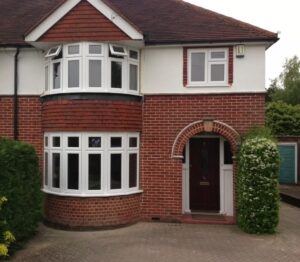
Double Glazing Prices
Company Description
15 Up-And-Coming Double Glazing Materials Bloggers You Need To Be Keeping An Eye On

Understanding Double Glazing Materials: A Comprehensive Guide
Double glazing has ended up being a standard practice in contemporary building and construction and home renovation, mainly due to its undeniable advantages in energy efficiency, soundproofing, and general convenience. At the core of this development lies a variety of materials, each contributing distinct advantages to the double glazing phenomenon. This article explores the numerous products utilized in double glazing, their homes, benefits and drawbacks, and how they impact the total performance of windows.
What is Double Glazing?
Double glazing is a kind of insulation that includes two panes of glass separated by a gap, typically filled with air or inert gas. This setup serves a main purpose: to minimize heat transfer between the interior and exterior of a building. As an outcome, double-glazed windows assist retain heat throughout winter season and keep areas cooler throughout summer.

Benefits of Double Glazing
- Energy Efficiency: Minimizes heat loss, decreasing energy costs.
- Sound Insulation: Reduces outdoors noise, improving comfort.
- Condensation Reduction: Lesser condensation means less threat of mold.
- Increased Security: Tougher than single-pane choices, using higher defense against break-ins.
- Enhanced Property Value: Homes with double glazing are often more enticing to purchasers.
Common Double Glazing Materials
1. Glass Types
The effectiveness of double glazing is mostly influenced by the kind of glass used. Below are the common kinds of glass used in double glazing:
| Glass Type | Description | Benefits | Disadvantages |
|---|---|---|---|
| Drift Glass | Standard glass, normally used in basic applications. | Affordable | Less insulation compared to Low-E glass. |
| Low-Emissivity (Low-E) | Glass coated with a thin metallic layer to reflect heat. | Exceptional insulation, maintains natural light. | Higher preliminary expense. |
| Tempered Glass | Heat-treated glass that is stronger and more secure. | More durable, resistant to impact. | Can be more expensive due to processing. |
| Laminated Glass | Glass layers bonded with a plastic interlayer. | Deals security and UV security. | Much heavier and more expensive options. |
2. Spacer Bars
Spacer bars are the products that separate the two panes of glass in a double-glazed system. Various materials can be utilized for this function:
| Spacer Bar Material | Description | Advantages | Drawbacks |
|---|---|---|---|
| Aluminium | Light-weight and rigid however conductive. | Resilient and economical. | Can lead to condensation due to heat transfer. |
| PVC-U | A plastic choice, less conductive compared to aluminum. | Excellent thermal performance. | May not be as resilient as aluminum. |
| Warm Edge Technology | Often consists of a composite material. | Decreases thermal bridging, improving performance. | Typically more pricey. |
3. Gas Fills
The gap in between the panes of glass can be filled with air or specific gases to improve insulation.
| Gas Type | Description | Benefits | Downsides |
|---|---|---|---|
| Air | Regular air without any unique homes. | Cost-effective and sufficient for lots of applications. | Lower insulation than gas-filled systems. |
| Argon | Inert gas that is denser than air. | Outstanding thermal insulation. | More expensive than air but frequently justified. |
| Krypton | Much heavier and more effective than argon. | Best insulation of the gas options. | Much greater expense and needs specialized techniques. |
Aspects Influencing the Choice of Double Glazing Materials
When choosing products for double glazing, numerous factors need to be taken into account:
- Climate: The regional environment has a considerable influence on energy performance, determining the requirement for specific glass types or gas fills.
- Budget: Initial expenses might exceed long-term benefits. Homeowners must balance upfront expenses with prospective cost savings.
- Visual Preference: Different frames and glass types use a series of visual styles that must match the architecture of the home.
- Structure Regulations: Local building regulations may dictate particular materials, requiring adherence to these standards.
Maintenance of Double Glazed Units
Beyond the installation of double glazing systems, regular maintenance is important for longevity and efficiency. Here are a couple of maintenance suggestions:
- Regular Cleaning: Use suitable cleaners for both glass and frames to prevent buildup of dirt and grime.
- Inspect Seals: Periodically examine window seals for damage or wear, as jeopardized seals can considerably lower insulation effectiveness.
- Condensation Control: Monitor for condensation in between panes, which may indicate seal failure and demand repair.
Regularly Asked Questions (FAQs)
Q: How long do double-glazed windows last?
A: Typically, double-glazed windows can last anywhere from 20 to 35 years, depending upon the quality of materials and setup.
Q: Can I change simply one pane of a double-glazed unit?
A: It is usually advised to replace the whole double-glazed system for optimal performance, as replacing only one pane can cause mismatching insulation residential or commercial properties.
Q: Are double-glazed systems more expensive than single Certified Glazing Experts?
A: Yes, double-glazed systems generally have a greater in advance cost due to advanced materials and building, however they frequently spend for themselves through energy savings.
Q: Will double glazing reduce sound pollution?
A: Yes, double-glazing effectively lowers outdoors noise, making your living environment more serene.
Selecting the best products for double glazing is a necessary action in improving energy efficiency, sound insulation, and the overall comfort of a home. With numerous glass types, spacer bars, and gas fills offered in the market, understanding these parts can significantly affect performance. Property owners should consider their special needs, preferences, and regional factors to achieve the very best arise from their investment in double glazing technology. Sticking to upkeep practices and staying notified about improvements in glazing materials will guarantee lasting gain from this useful and vital feature of modern architecture.


